AirVenture 2022 - Warbirds
|
|
This year at AirVenture I made a major personal discovery: Warbirds in Review. It's like a forum. Twice a day, they take a Warbird (or two or four) and put it on display in front of some bleachers. A panel of experts -- the owner, the pilot, the museum curator, a historian -- with a moderator, and discuss the Warbird for an hour or so.
Prior to the show talented singer Theresa Eaman -- pictured below at right -- sings period songs. She has an incredible voice.
The first Warbirds in Review I went to was supposed to be a de Havilland Mosquito but when I arrived a Hawker Sea Fury was sitting at show center. I stayed anyway and really enjoyed it. I didn't know much about the Sea Fury.
It turns out the Sea Fury was introduced in 1947, two years after the end of World War II. It represented the latest technology, and as a result, is probably the best single piston-engine fighter plane ever produced. Maybe the Grumman Bearcat comes close. Of course, the jets were on the scene by then and were clearly the future. The Sea Fury's engine was the powerful Bristol Centaurus. 864 Sea Furies were built. Some still fly at the Reno Air Races.
|
| |
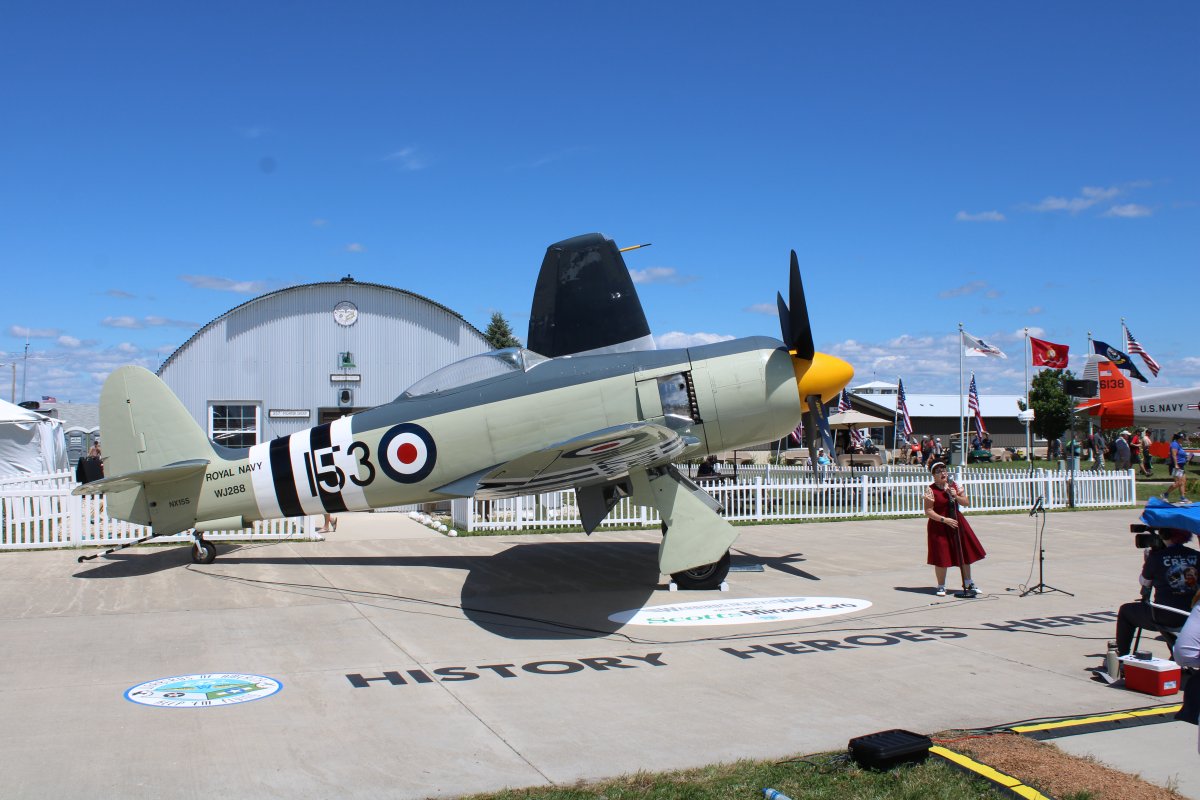 |
|
|
The owner and pilot of this Sea Fury does a walk-around for the audience and moderator.
|
| |
 |
|
| The next session concerned a Curtiss P-40 Warhawk and Vought F4U Corsair. Again, it was supposed to be a Mosquito but the Mosquito was having a hard time flying out from Virginia Beach and would not arrive until later in the week. Whether it ever made it to the Show at all I don't know. The panelists included Jerry Yagen, the owner of the Military Aviation Museum's collection at Virginia Beach, the MAA's curator, and the pilots who flew the two warbirds to AirVenture. |
| |
 |
|
|
This P-40 was the first warbird in Yagen's collection. Now he has one of the world's largest collections of warbirds in flying condition. The MAA has twice-yearly major airshows (one in the spring for World War II aircraft, and one in the fall for World War I aircraft). They allow private planes to fly in on those occassions and I've done so a number of times.
Yes, this is the same P-40 we encountered at Parkersburg Airport in West Virginia on our way to Oshkosh.
|
| |
 |
|
| It was interesting to hear the pilots and historian talk about flying the aircraft and its history. The Corsair was faster than the Hellcat and was the speed was useful late in the war in running the kamikazes down. |
| |
 |
|
| By far the most popular Warbird in Review was the one on the P-51 Mustang, probably because World War II ace Colonel Bud Anderson was on the panel. The session was packed and I couldn't get a seat. |
| |
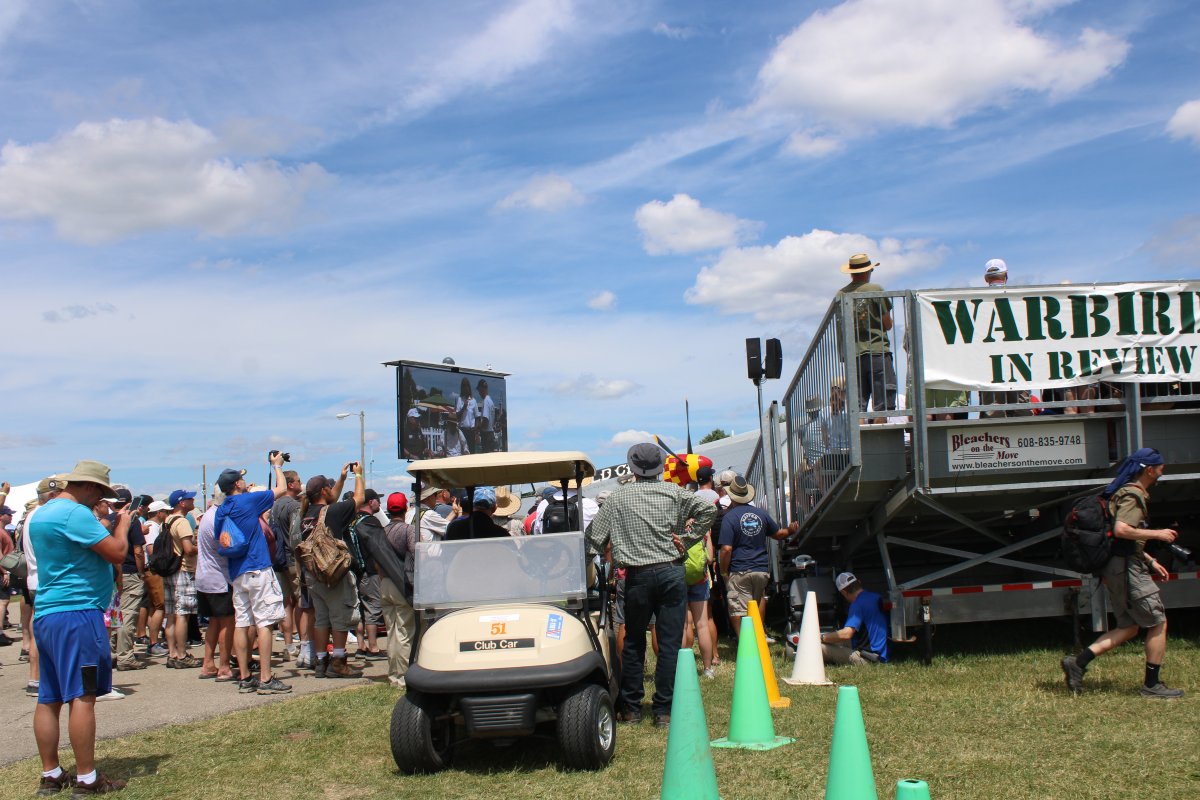 |
|
| But I could still watch the session on the big screen they have set up. Bud Anderson is 100 years old, and rode in a P-51 (two-seater) earlier in the day! |
| |
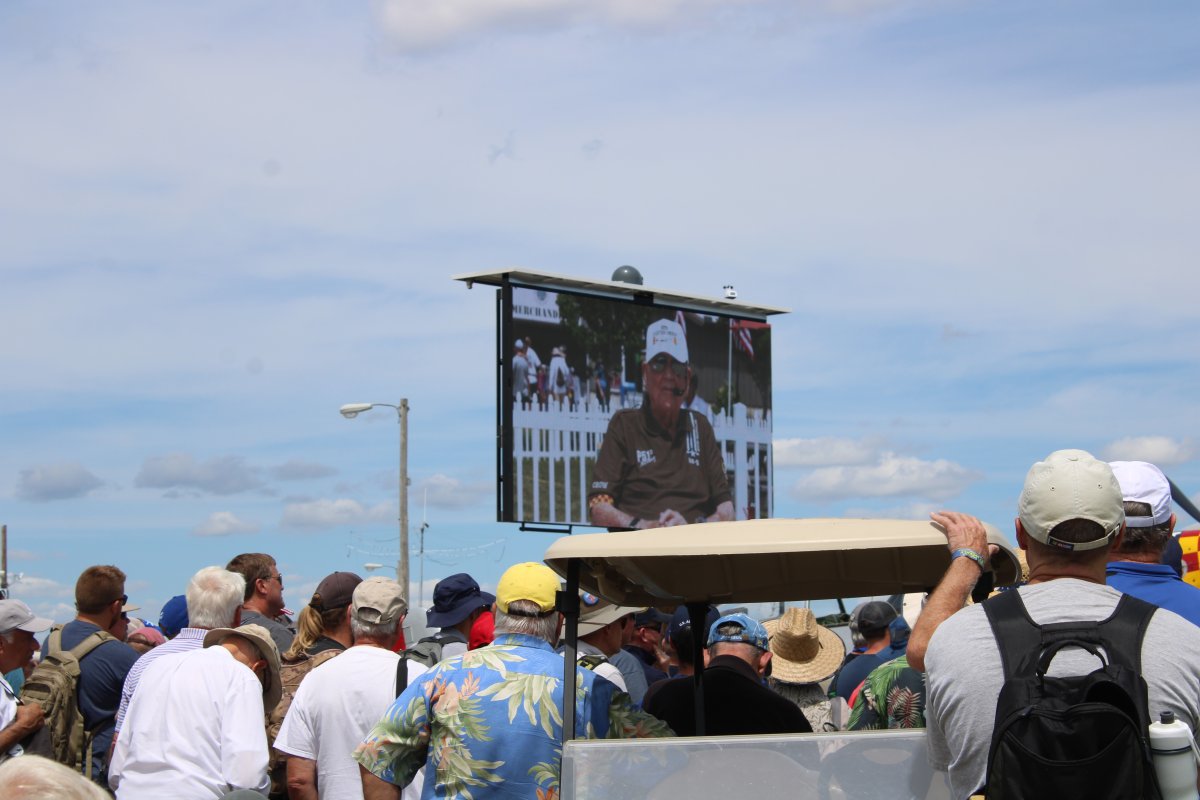 |
|
|
This Warbird in Review I really wanted to see. It concerned the Grumman Cats: the Wildcat, Hellcat, Tigercat and Bearcat.
|
| |
 |
|
| The Wildcat and Hellcat on the left. |
| |
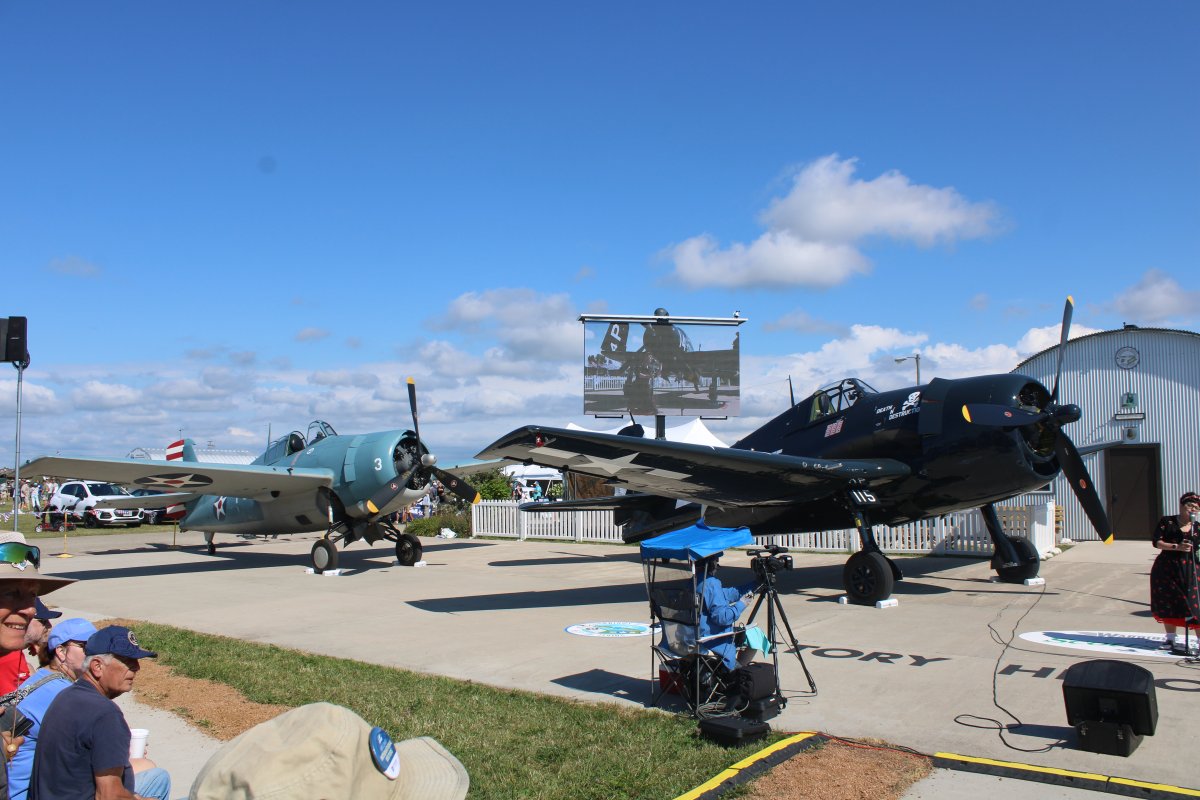 |
|
|
And Bearcat and Tigercat on the right.
|
| |
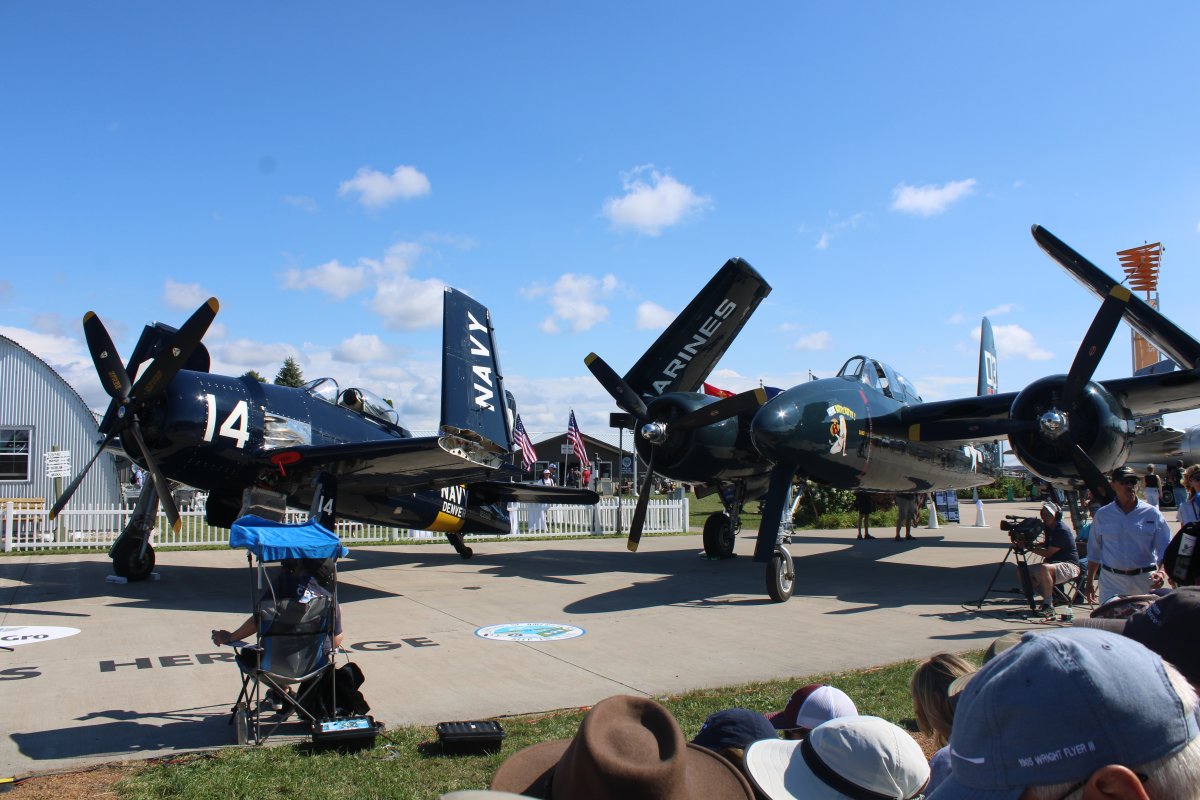 |
|
|
Another Warbirds in Review session I really looked forward to: the Me-109. There were not one, but two 109s on display. Both are G models. A German historian tele-conferenced in and is visible on the big screen.
The left 109 was recovered from the edge of a lake in northern Russia and completely restored. It has an original Daimler Benz engine. It is in the markings of the plane that was recovered (as best they could tell).
I knew the M-109 (and the Spitfire)had short range, but the pilot saying the plane only carried 106 gallons of fuel or so -- and the 109 burns 110 gallons per hour at full power -- made it real. Then they said the P-51 Mustang carries 269 gallons of fuel internally.
|
| |
 |
|
| The 109 on the right was a Spanish-built 109 used in the Battle of Britain movie. It used the British Merlin engine and had a cowl that just looked wrong. On this particular 109, they replaced the Merlin with an Allison engine which allowed them to use a cowl almost identical to the original 109G cowl. This airplane has the paint scheme flown by the Luftwaffe ace Hermann Graf. In about 830 combat missions, he claimed a total of 212 aerial victories, almost all of which were achieved on the Eastern Front. |
| |
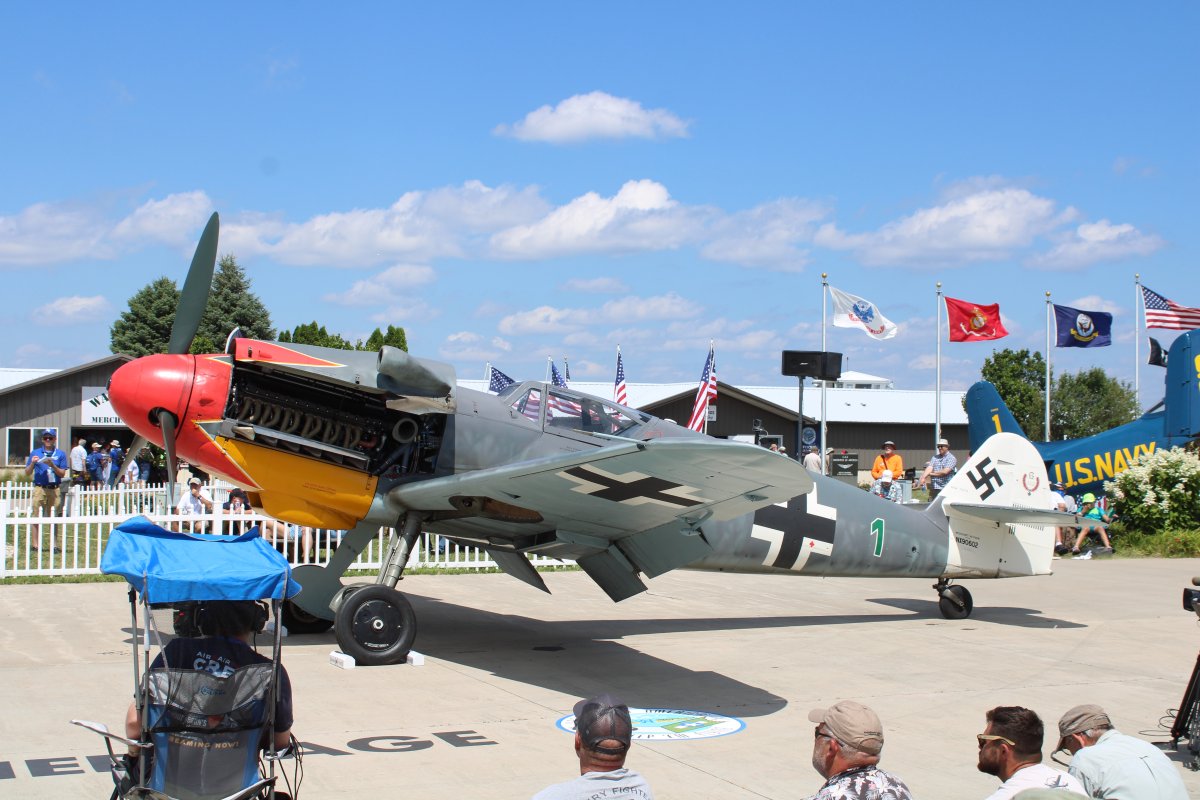 |
|
| Earlier in the week, I took a close look at the 109s up close. |
| |
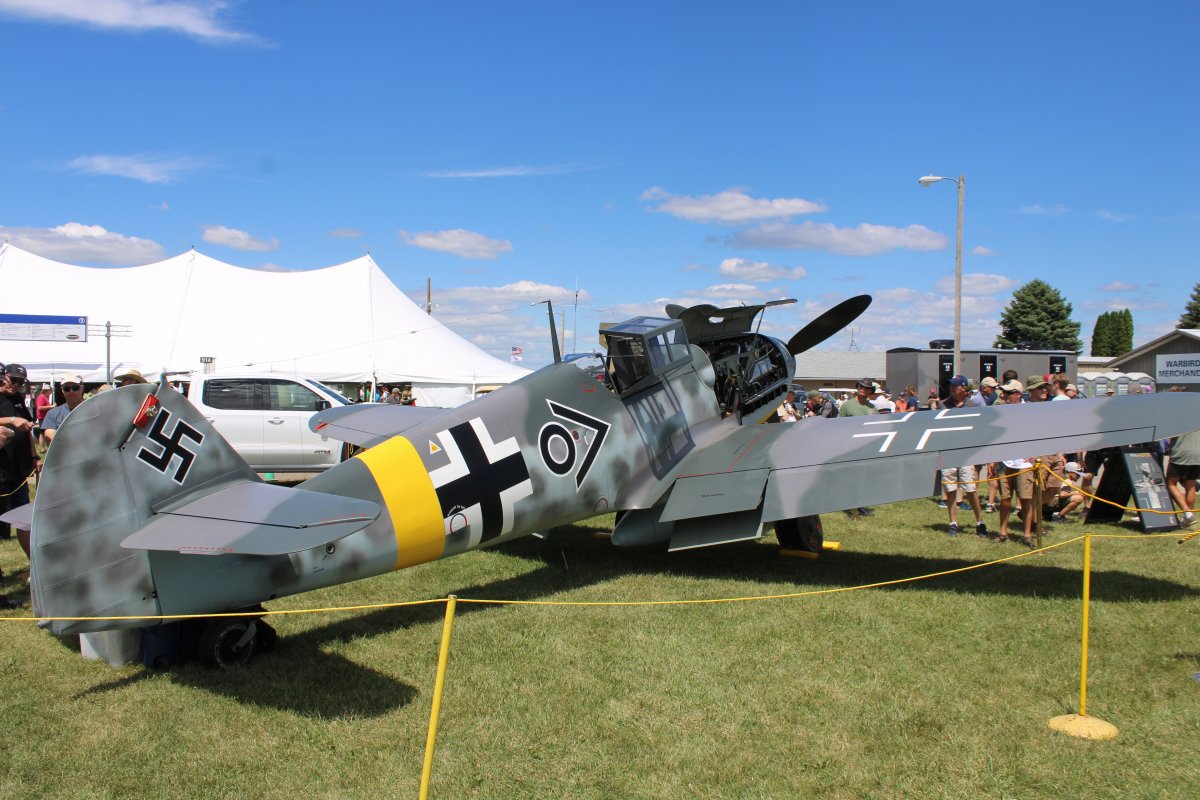 |
|
|
The Daimler Benz 606 engine. Liquid-cooled, inverted-V12 engine.
|
| |
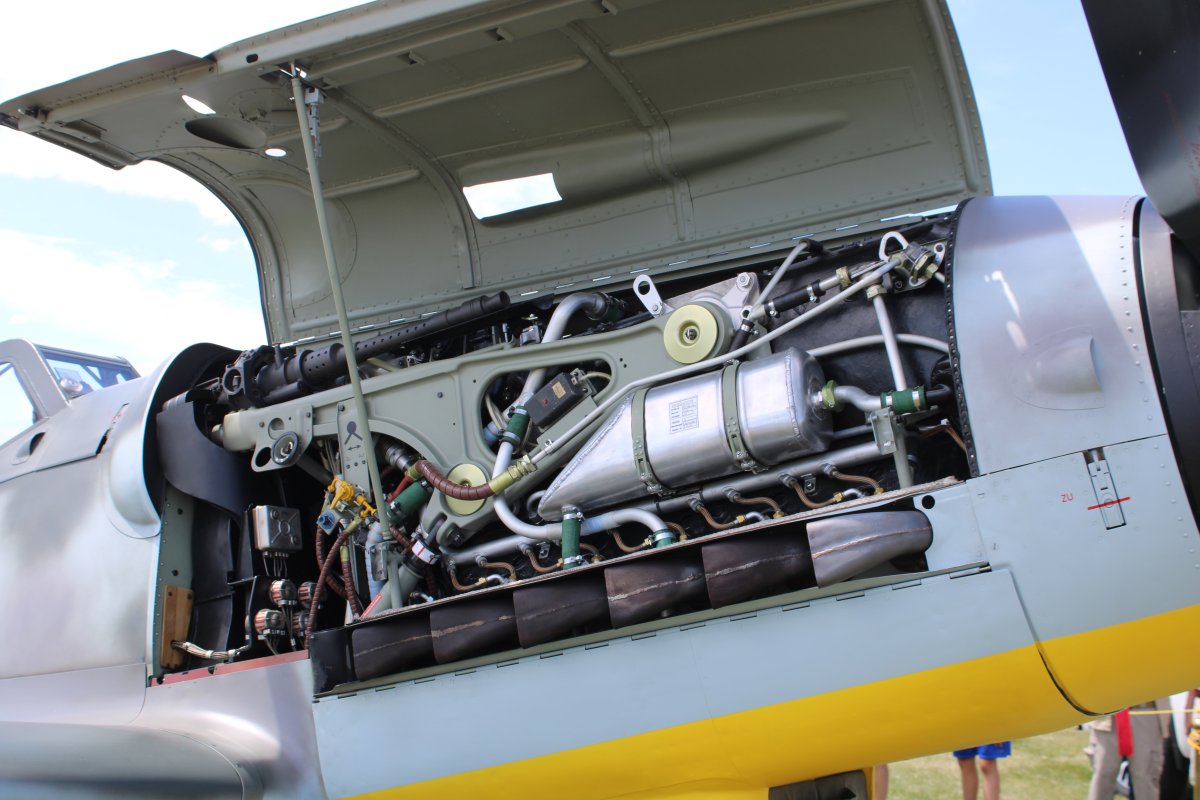 |
|
| The narrow gear has been blamed for many takeoff and landing accidents in this airplane. That said, the Me-109 was very easily transported by train to the front. |
| |
 |
|
|
|
| |
 |
|
| |
| |
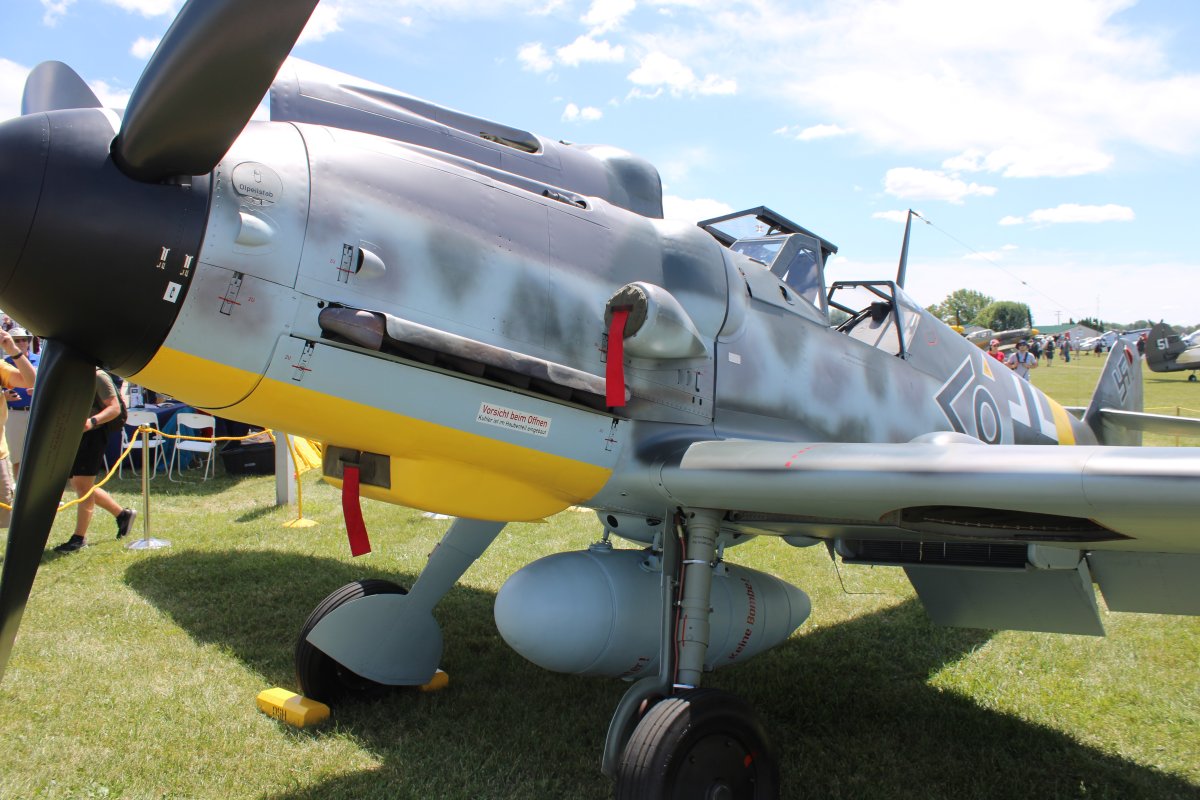 |
|
| |
| |
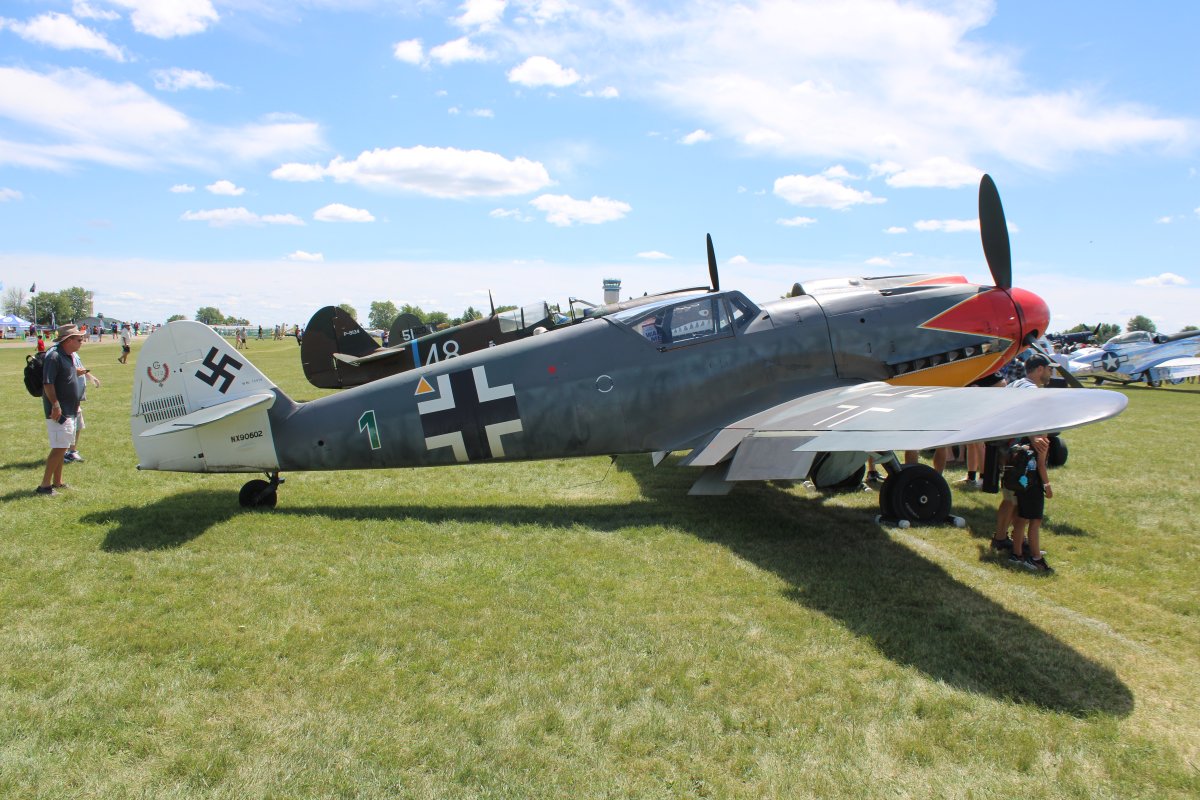 |
|
| |
| |
 |
|
|
|
| |
 |
|
|
Close-up of the Hellcat.
|
| |
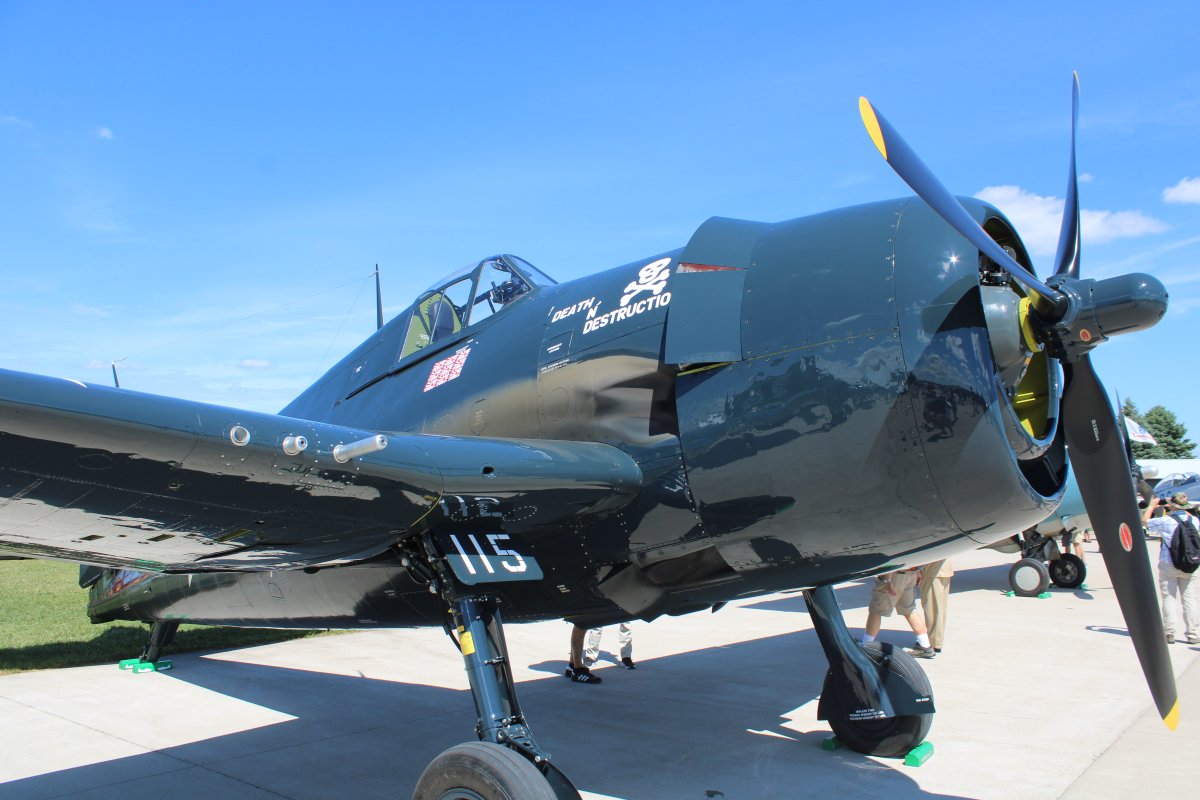 |
|
| A good look at the Hellcat's big Pratt & Whitney R-2800 Double Wasp radial engine, the same powerplant used for both the Corsair and the Republic P-47 Thunderbolt fighters. |
| |
 |
|
| Hellcat from the rear. |
| |
 |
|
| Head on view of the Hellcat. |
| |
 |
|
|
A Corsair taxiis on Mustang Avenue.
|
| |
 |
|
| How cool it must be to fly your Corsair into AirVenture. |
| |
 |
|
| There were quite a few Corsairs and Mustangs at AirVenture. |
| |
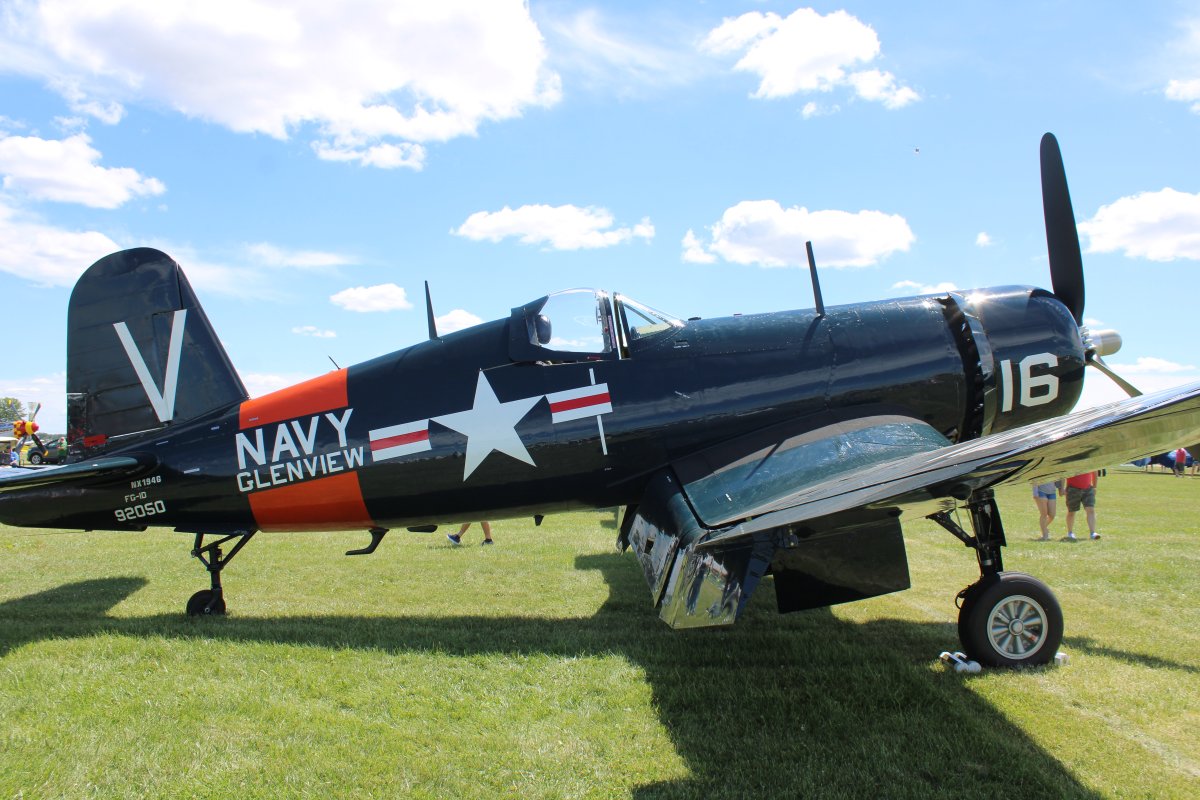 |
|
| |
| |
 |
|
| |
| |
 |
|
|
Checking out the Wildcat again.
|
| |
 |
|
|
This aircraft is in the markings of LCDR Edward "Butch" O'Hare, the Navy's first fighter ace of the war. He was killed in battle in late November, 1943.
|
| |
 |
|
|
The U.S. Navy's great dive bomber: the Douglas SBD Dauntless.
|
| |
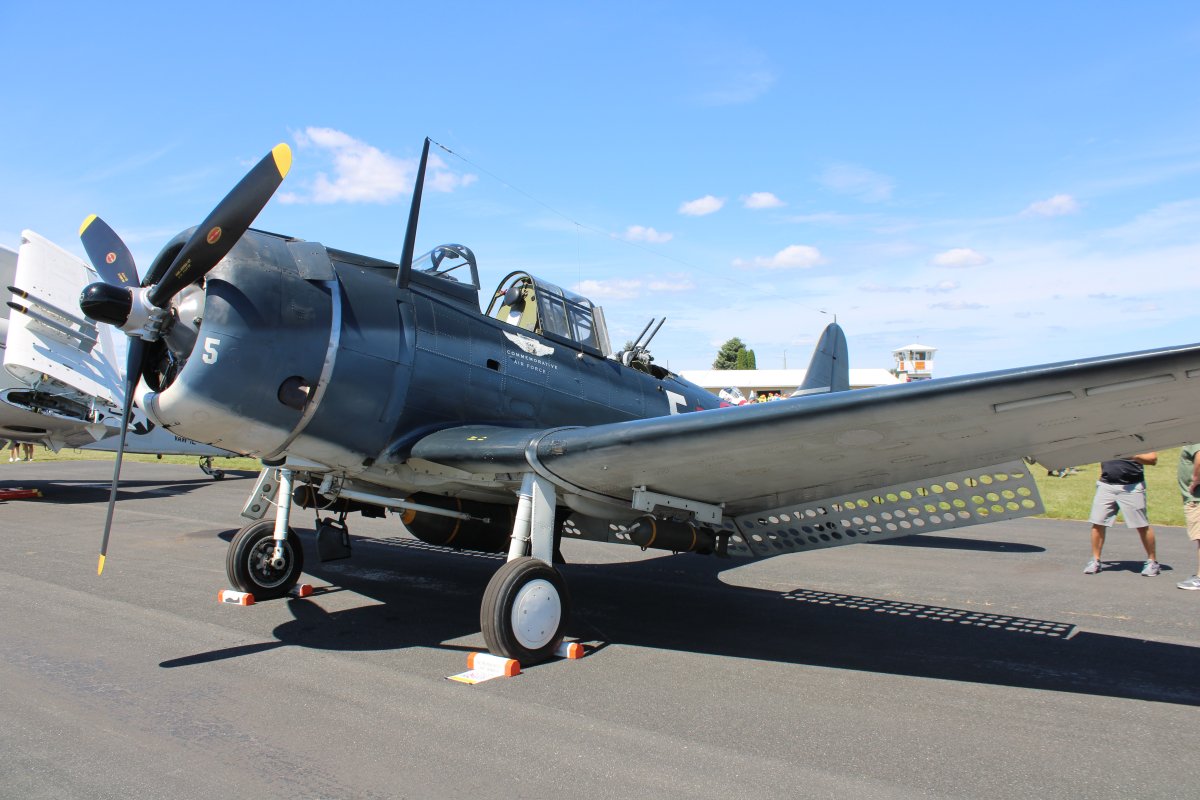 |
|
| Later in the show, I snapped a picture of the Dauntless taking off. |
| |
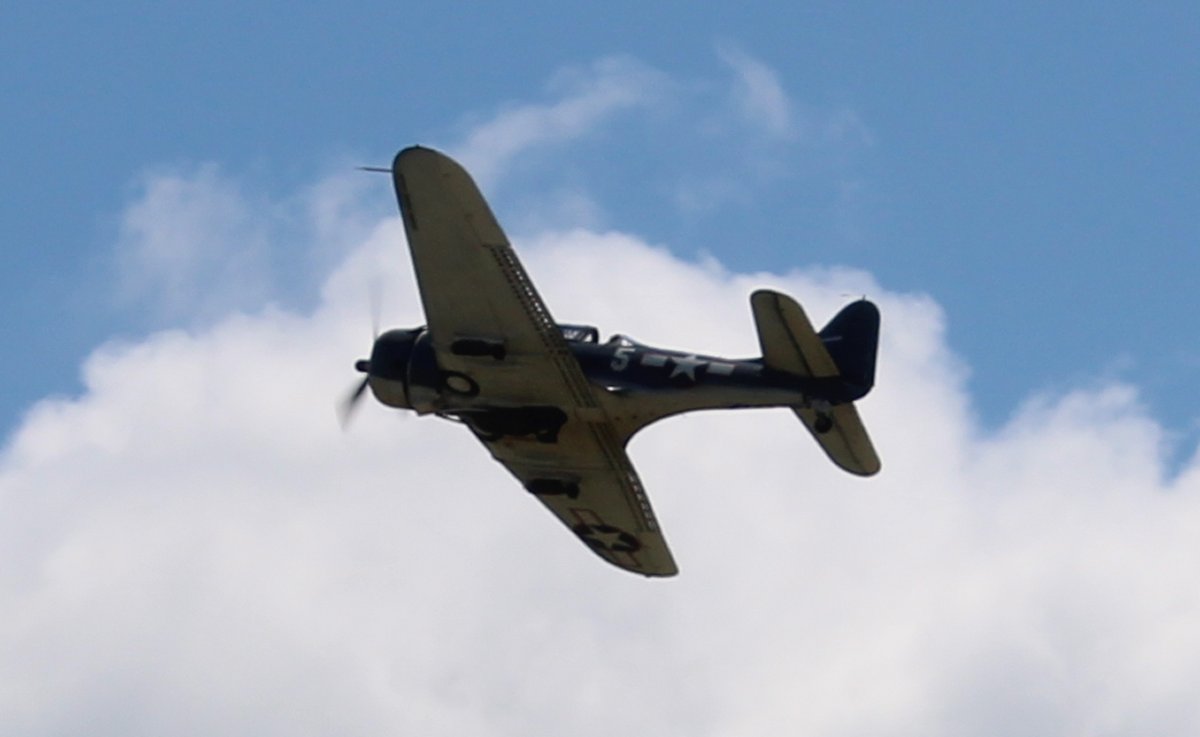 |
|
| A P-40 Warhawk with some nice nose art. |
| |
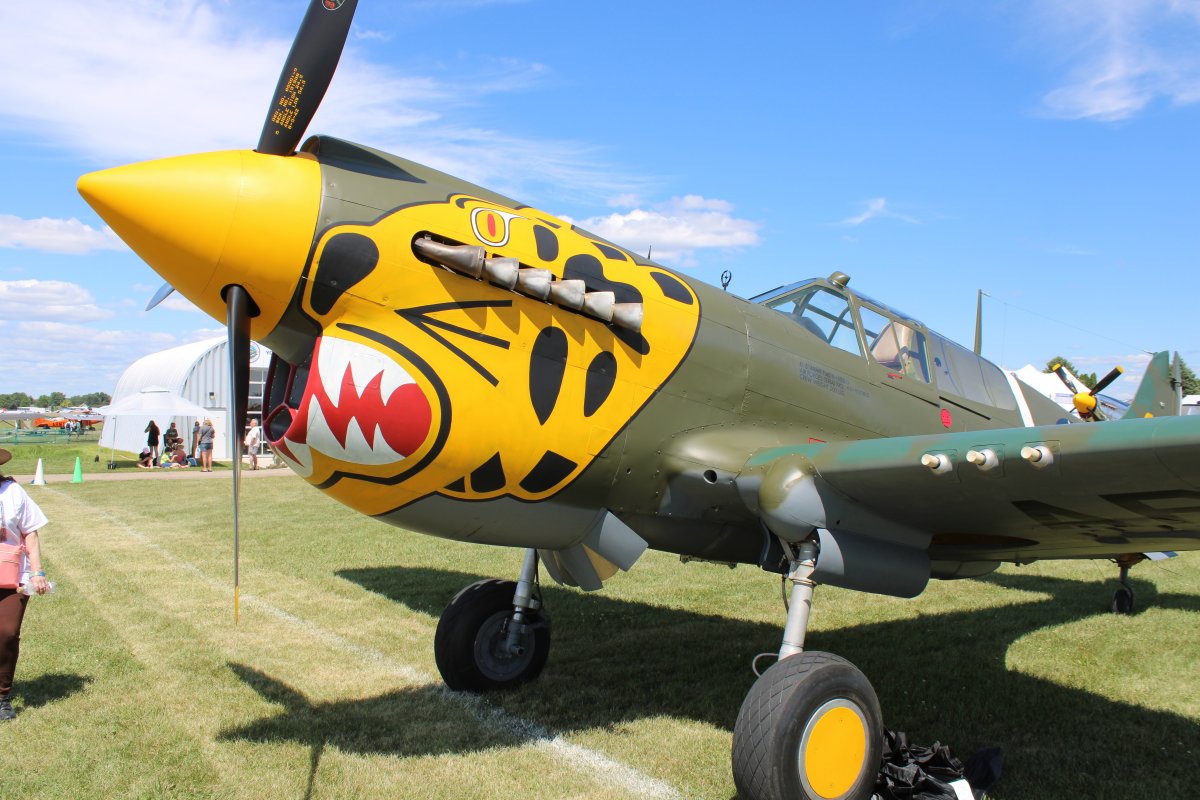 |
|
| Bell P-39 Airacobra. |
| |
 |
|
|
Douglas A-26 Invader.
|
| |
 |
|
| Heavily armed North American B-25 Mitchell. |
| |
 |
|
|
This B-25 "Panchito" lives in nearby Georgetown, Delaware.
|
| |
 |
|
| This Douglas C-47 Skytrain looks like it did back in WWII. |
| |
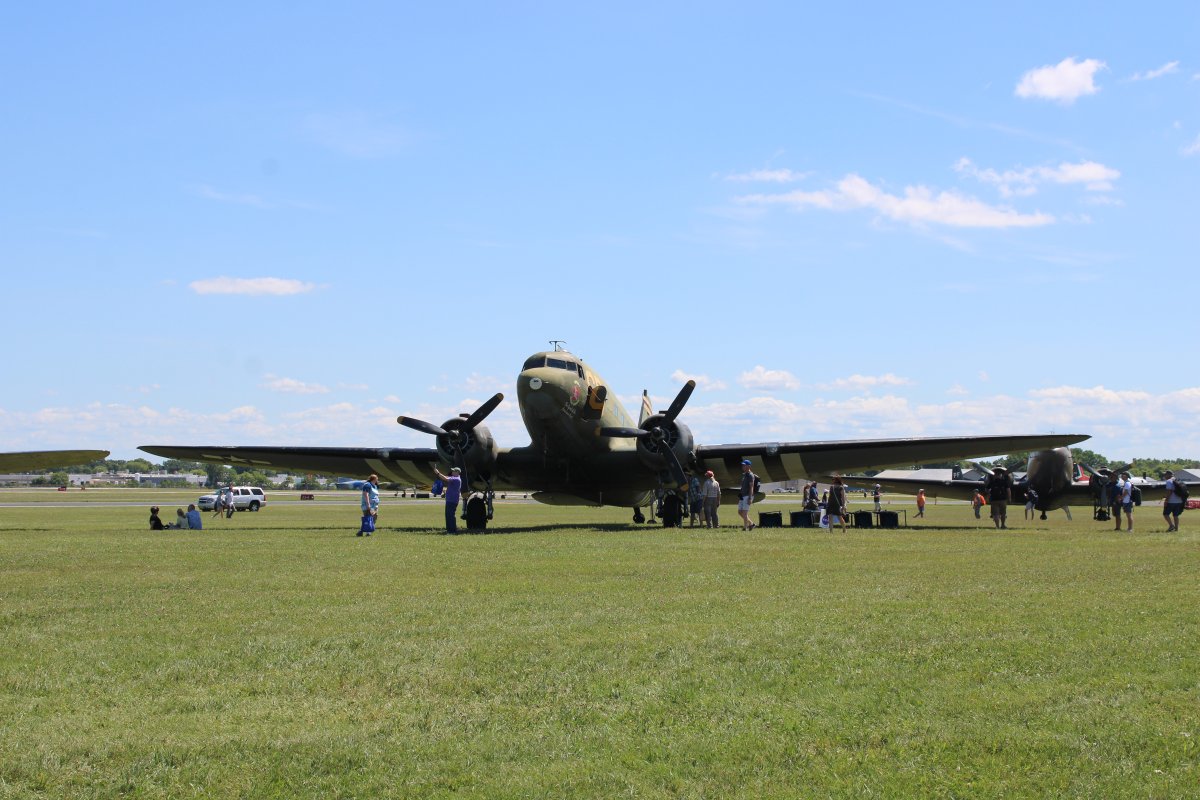 |
|
| |
| |
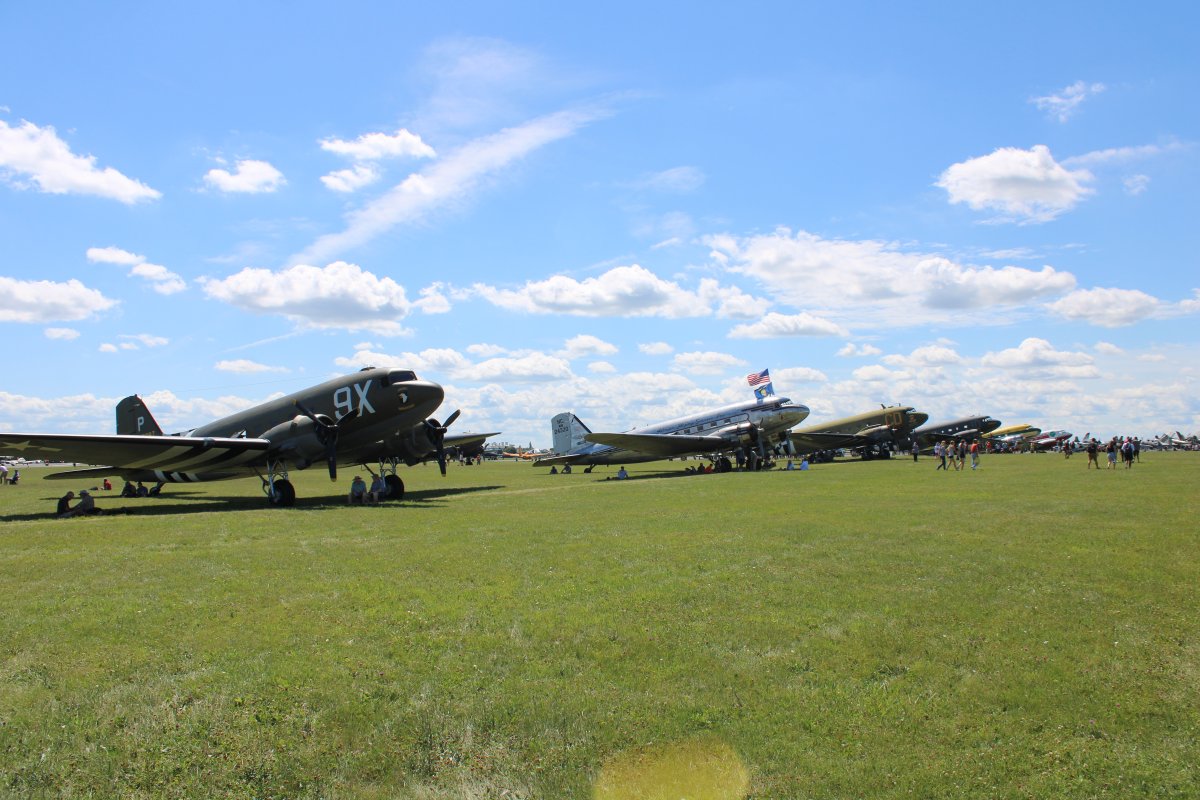 |
|
| Another great WWII Navy plane, the Consolidated PBY Catalina. |
| |
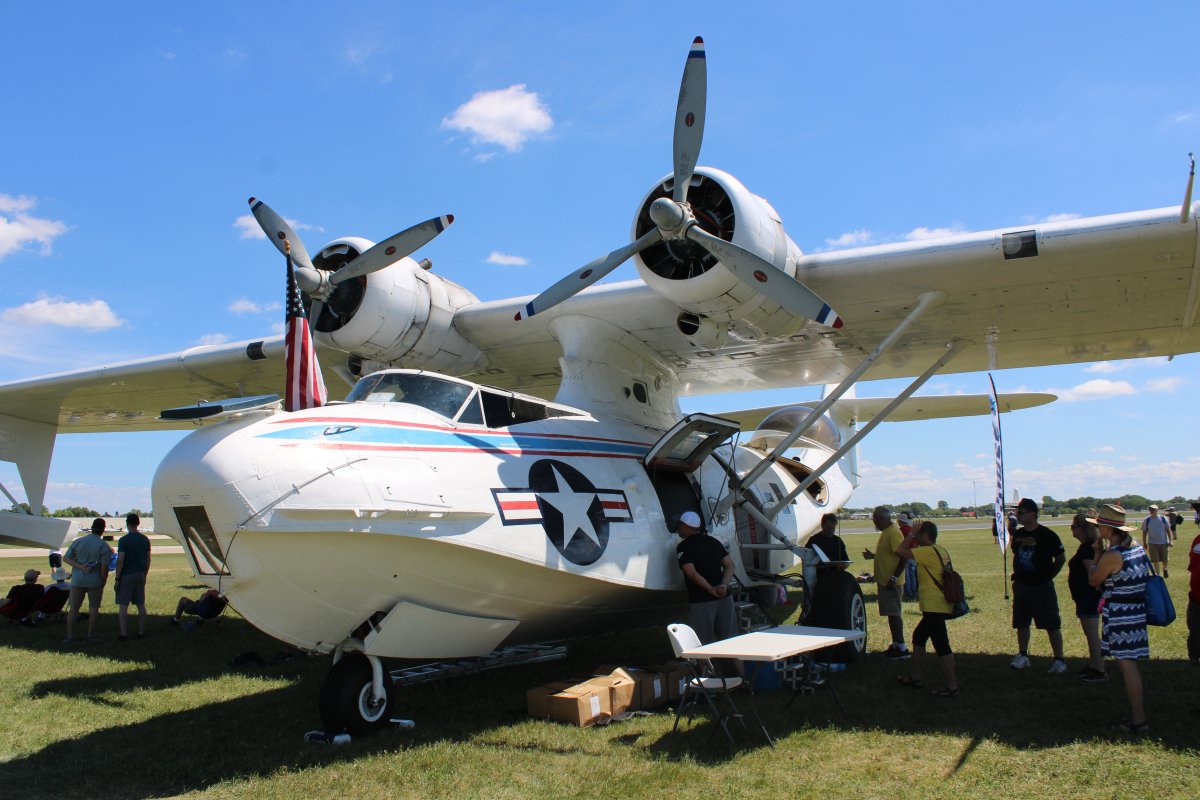 |
|
|
Massive AD-1 Skyraiders parked on the ramp.
|
| |
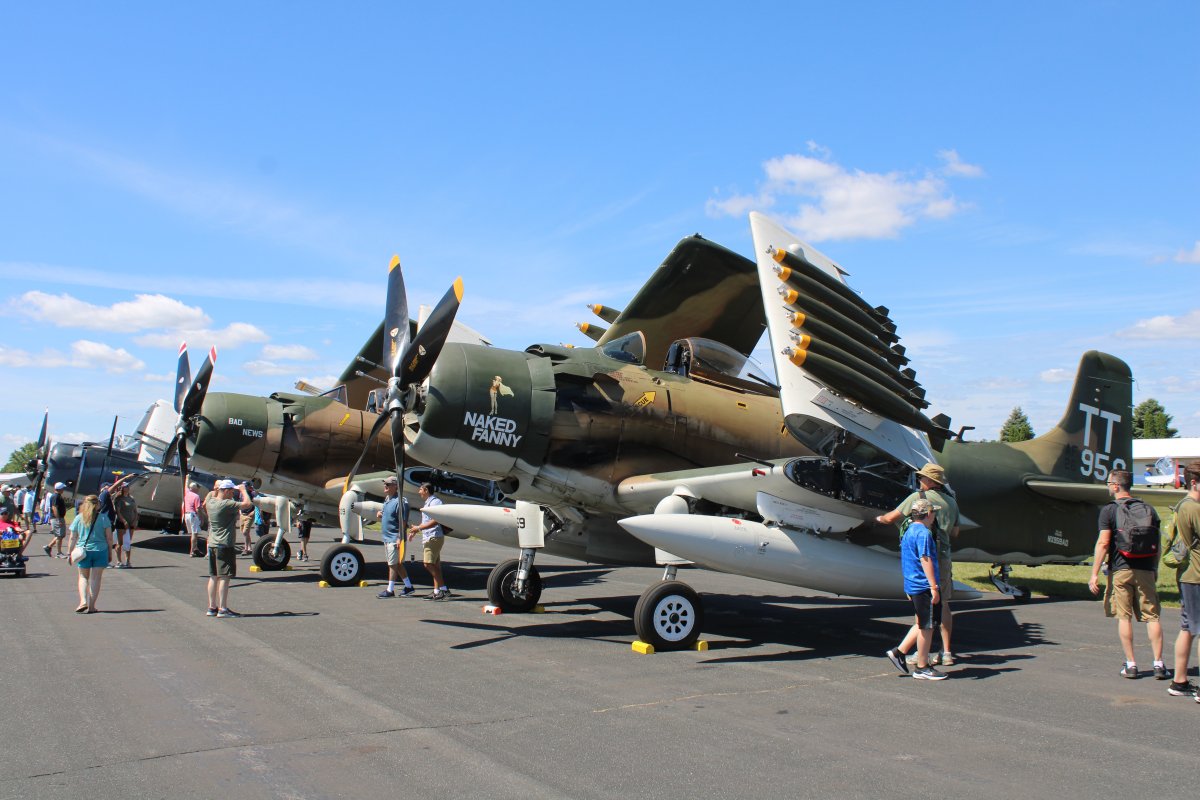 |
|
| Check out that nose art on the B-25. It's been modified. |
| |
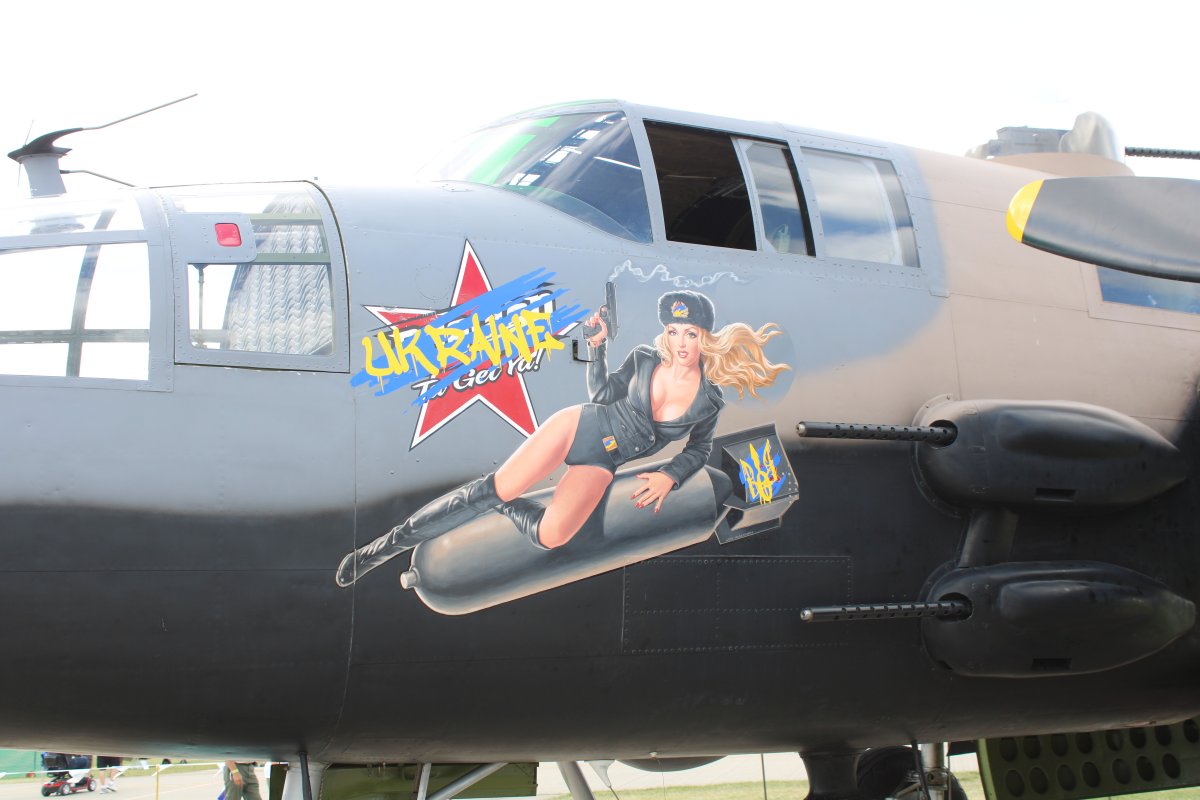 |
|
| A silver F7F Tigercat. |
| |
 |
|
| |
| |
|
|
|
|
|
|











































